Key Takeaways
- Progress Tracking: Maintaining a fitness log allows individuals to visually track improvements over time, celebrating milestones in their fitness journey.
- Goal Setting: A fitness log helps transform vague fitness aspirations into specific, measurable, and attainable goals, enhancing focus and motivation.
- Nutritional Awareness: Recording dietary habits in a fitness log fosters accountability and encourages better food choices, contributing to overall health.
- Motivation Boost: Regularly logging workouts and achievements not only highlights successes but also maintains motivation to stay consistent and push limits.
- Personalization: Fitness logs can be customized, whether digital or traditional, to fit individual preferences, making the tracking experience more enjoyable and effective.
- Reflective Practice: Allocating time for self-reflection in the fitness log helps identify patterns, celebrate success, and make necessary adjustments to fitness strategies.
Tracking progress is essential for anyone on a fitness journey, and that’s where a fitness log comes into play. This simple yet powerful tool helps individuals monitor their workouts, nutrition, and overall health. By recording daily activities and achievements, they can gain valuable insights into their habits and make informed adjustments to reach their goals.
Whether someone is a seasoned athlete or just starting out, a fitness log offers the structure needed to stay accountable. It transforms vague aspirations into tangible milestones, making the path to fitness clearer and more achievable. Embracing this practice not only fosters discipline but also boosts motivation, empowering individuals to push their limits and celebrate their successes along the way.
Fitness Logs
 Fitness logs serve as essential tools for individuals committed to their fitness journeys. These records help users keep track of workouts, nutrition, and overall health metrics by documenting daily activities and milestones. Utilizing a fitness log promotes structure and accountability, allowing both experienced athletes and beginners to transform vague objectives into actionable goals.
Fitness logs serve as essential tools for individuals committed to their fitness journeys. These records help users keep track of workouts, nutrition, and overall health metrics by documenting daily activities and milestones. Utilizing a fitness log promotes structure and accountability, allowing both experienced athletes and beginners to transform vague objectives into actionable goals.
Maintaining a fitness log offers numerous benefits, including:
- Progress Tracking: Regularly documenting workouts helps visualize improvements over time.
- Goal Setting: Users can outline specific fitness goals, making them measurable and attainable.
- Nutritional Awareness: Recording food intake ensures individuals remain aware of their dietary habits.
- Motivation Boost: A fitness log serves as a motivational tool, highlighting successes and encouraging consistency.
- Identification of Patterns: Users can analyze data to pinpoint effective workout routines and dietary choices.
By integrating a fitness log into their routine, individuals can cultivate discipline and drive, making it a pivotal component of a successful fitness journey.
Benefits Of Using A Fitness Log
Using a fitness log offers multiple advantages that can enhance an individual’s health journey. It serves as a valuable tool for tracking progress and setting goals effectively.
Tracking Progress
Tracking progress becomes more manageable with a fitness log. Individuals can monitor workout performance, record weights lifted, and note distances run. By reviewing this data regularly, users visualize improvements over time, highlighting significant milestones in their fitness journey. This visual representation of progress fosters a sense of achievement, motivating continued effort. Moreover, identifying trends in performance helps pinpoint areas for improvement, ultimately leading to more informed training decisions.
Setting Goals
Setting goals transforms vague aspirations into actionable plans through a fitness log. Users can define specific, measurable, attainable, relevant, and time-bound (SMART) fitness objectives. By documenting these goals, individuals create a roadmap for their fitness journey. Regularly updating their progress in the log reinforces accountability, making it easier to stay on track. Clear goals not only provide direction but also enhance motivation, as users can celebrate achievements along the way.
Types Of Fitness Logs
 Fitness logs come in various formats, each catering to different preferences and needs. Two primary types of fitness logs include digital fitness logs and traditional fitness journals.
Fitness logs come in various formats, each catering to different preferences and needs. Two primary types of fitness logs include digital fitness logs and traditional fitness journals.
Digital Fitness Logs
Digital fitness logs offer convenience and advanced tracking capabilities. Users can access online platforms or mobile applications that allow for real-time entry of workouts and food intake. These logs often include features like progress graphs, workout reminders, and community support options. Many digital logs enable integration with fitness devices, providing automated data input for activities such as running, cycling, and weightlifting. Popular digital fitness log apps include MyFitnessPal, Fitbit, and Strava, which provide metrics and analytics to help individuals achieve their goals effectively.
Traditional Fitness Journals
Traditional fitness journals present a tangible option for tracking fitness activities. These journals usually consist of physical notebooks where users manually log workouts, diets, and health observations. Traditional logs allow for creative expression through doodles, stickers, or motivational quotes. While they lack the advanced technology of digital logs, many individuals prefer the tactile experience of writing. Additionally, using traditional journals can enhance mindfulness and retention of information. Popular formats include dedicated fitness planners and bullet journals, which can be customized according to personal goals and preferences.
How To Create An Effective Fitness Log![]()
Creating an effective fitness log involves selecting an appropriate format and including essential components that enhance tracking and accountability.
Choosing The Right Format
Selecting a suitable format for a fitness log is crucial. Individuals can choose between digital fitness logs and traditional fitness journals. Digital fitness logs provide convenience, with apps like MyFitnessPal and Strava enabling users to track workouts, nutrition, and progress in real-time. These platforms often feature graphs and reminders, simplifying data management. On the other hand, traditional fitness journals suit those who prefer a hands-on approach, allowing for creative expression and personalization. Dedicated fitness planners or bullet journals can provide unique layouts tailored to individual goals and preferences. Evaluating personal preferences and lifestyle will help in making an informed choice.
Key Components To Include
Incorporating key components in a fitness log ensures comprehensive tracking. Essential elements include:
- Date: Documenting the date helps maintain a chronological order, allowing for easy progress analysis.
- Workout Details: Specify the type of exercise, duration, intensity, and sets or repetitions performed. This information promotes objective evaluation of performance.
- Nutrition Information: Record food intake, including macronutrients and calorie counts. This fosters dietary awareness and accountability.
- Goals: Note both short-term and long-term fitness objectives to maintain focus and direction in the fitness journey.
- Progress Measurements: Include metrics such as weight, body measurements, or personal records to visualize improvements over time.
- Reflection: Allow space for self-reflection on workout experiences, challenges, and achievements to enhance motivation and drive.
Including these components in a fitness log creates a structured approach to tracking progress and achieving fitness goals.
Tips For Maintaining A Fitness Log
- Be Consistent: Regularly update the fitness log to ensure accurate tracking of workouts and nutrition. This consistency fosters accountability and reinforces dedication to fitness goals.
- Set Clear Goals: Define specific, measurable targets in the fitness log. Establish short-term and long-term objectives to create a roadmap for progress.
- Keep It Simple: Use concise entries that capture essential information, such as workout type, duration, and intensity. Simplicity makes it easier to maintain the log over time.
- Incorporate Measurements: Record relevant metrics, such as weight, body measurements, or performance stats. Tracking these details helps visualize progress and adjust fitness strategies.
- Reflect Regularly: Allocate time for self-reflection in the fitness log. This reflection allows individuals to identify patterns, celebrate successes, and make necessary adjustments.
- Stay Organized: Maintain a structured layout in the fitness log. Use sections for different workouts, nutrition, and goals to enhance clarity and ease of use.
- Use Technology Wisely: If opting for a digital log, explore features like reminders and progress graphs. These tools enhance tracking capabilities and encourage regular updates.
- Customize for Motivation: Personalize the fitness log according to preferences. Include motivational quotes, photos of achievements, or rewards for reaching specific milestones to sustain enthusiasm.
- Review Progress Often: Regularly assess logged entries to evaluate progress towards goals. This review process fosters motivation and allows for timely adjustments in fitness plans.
Embracing a fitness log can significantly enhance one’s fitness journey. By consistently tracking workouts and nutrition, individuals can gain valuable insights into their progress and make informed adjustments. Whether opting for a digital app or a traditional journal, the choice should align with personal preferences and lifestyle.
The act of logging not only fosters accountability but also cultivates a sense of discipline. As individuals set clear goals and celebrate their achievements, motivation naturally follows. Regular reflection on logged entries ensures that fitness plans remain effective and adaptable. Ultimately, a fitness log serves as a powerful tool, guiding individuals toward their health and wellness aspirations.




